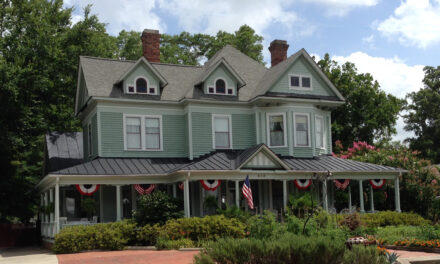Chamber music, especially the trio form, is one of the more intimate genres of music, sometimes even more so than solo pieces. While it seems simple for a cellist, pianist, and violinist to play music together, there is something else that is necessary: a “secret ingredient” that brings the music on the page to life. Whatever this ingredient is, the Chanterelle Trio has nailed it. As part of Chamber Music Raleigh‘s “Sights and Sounds” performances at the NC Museum of Art, the trio, violinist Nicholas DiEugenio, cellist Hannah Collins, and pianist Mimi Solomon, created a marvelously engaging performance that exemplified the highest standard of the trio genre. The three are international musicians of the highest caliber, but even their many credentials might not fully explain their passion for creating beautiful music – that can only be experienced.
The program was trios by Beethoven, Schumann, and Dvořák. Each contained contrast, internal and with the others; the blissful Fantasiestücke by Robert Schumann and Dvořák’s memorable “Dumky” trio followed Beethoven’s vibrant “Ghost” trio. From the onset of the vigorous first movement of the Beethoven Trio in D, Op. 70, No. 1, it was apparent that these three musicians perform with truly organic expression and collaboration. The melody was begun in the cello and the violin soon joined in harmony over sparkling notes in the piano. This type of texture proved to be common across the three movements. Throughout the Allegro movement and on to the mysterious Largo that earned the nickname “Ghost,” imitation reigned among the three instruments. In the final Presto movement, quick melodic exchanges occur even in the middle of phrases, resulting in a breathless and humorous mood. DiEugenio played with a unique, subtle humor that was always shown on his face, and Collins, with a obviously deeply rooted passion. The two string players worked seamlessly together with Solomon, whose musical expression shone especially where her music was most virtuosic.
Schumann’s Fantasiestücke, Op. 88 are examples of the more intimate side of chamber music. Inspired by early 19th century German literature, these pieces were intended to be played in smaller, less public settings. The Chanterelle Trio illustrated this by shifting to a more gentle and elegant expression that worked perfectly in concert, especially with the “Romanze.” In contrast, the “Humoreske” is punctuated and pompous, with many dotted rhythms. From there the trio moved on to the six movements of Dvořáks’ Trio No. 4 in E minor, Op. 90, also known as “Dumky.” This Slavic word literally means “thought,” but has become known as a genre of folk music with high contrast between sorrow and joy. Nearly all of the movements have designated tempos that are exchanged. True to Dvořák’s style, this trio is full of these contrasts plus memorable themes woven among each other. These melodies and contrasts would not have reached their full potential without the sheer musicality of the Chanterelle Trio. The three were in sync musically and emotionally, which was essential for sudden raucous texture changes or goose-bump-inducing transitions back to a sorrowful mood. In the third movement, Andante – Vivace non troppo, the melody was introduced by Solomon in a single, beautiful line, then again with strings – the musicians’ expression here was quite moving. This movement was also notable for its different textures: Collins’ pizzicato strumming and DiEugenio’s light, high notes stood out well.
The final movement, Lento – Vivace, is mysteriously playful, and perhaps the movement with the most obvious roots in folk music. As the theme is transformed, the texture becomes fiery and dancelike. As with all the other pieces on the concert, every single phrase was played with intentionality, creating a captivating and immersive experience. And if that weren’t enough, the three performers of the Chanterelle Trio looked like they were having so much fun – and so did the audience.











